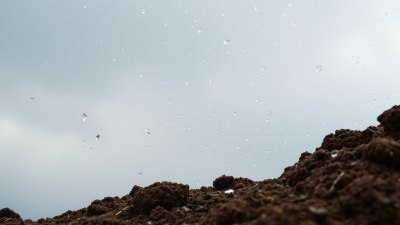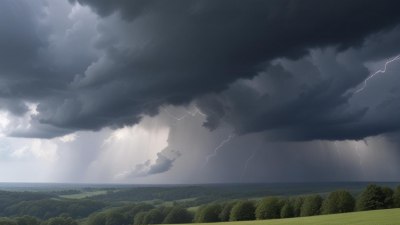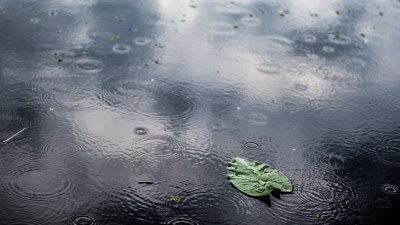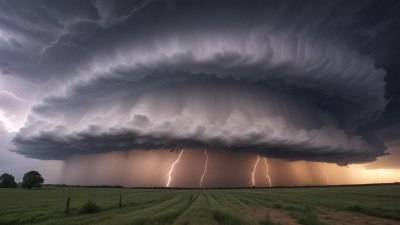Why It Smells Like Rain Before It Rains
Explore the intriguing reasons why the air smells like rain before it actually rains and learn about the science behind this phenomenon.

The phenomenon of detecting the scent of rain before it actually falls has intrigued people for centuries, prompting questions about the natural processes involved in this uniquely anticipatory smell. This distinct earthy aroma that often precedes rainfall is commonly known as "petrichor." Understanding why it smells like rain before rain arrives involves exploring the interactions among soil, plants, air, and atmospheric conditions.
What Is Petrichor?
Petrichor is the term coined in the 1960s by two Australian researchers, Isabel Joy Bear and Richard G. Thomas, who studied the scent produced when rain falls on dry soil. Derived from the Greek words "petra" meaning stone and "ichor" which refers to the fluid that flows in the veins of the gods in Greek mythology, petrichor aptly describes the pleasant, earthy smell associated with rain.
This smell is particularly noticeable after a dry spell when the first few drops of rain hit the ground and release this distinct fragrance into the air. But what causes this familiar scent?
The Chemistry Behind the Scent of Rain
The primary contributors to the scent recognized as the smell of rain are a combination of compounds released from soil and plants as well as various atmospheric reactions triggered by changes in humidity and pressure preceding rainfall. One key component is a group of organic compounds called "geosmin," produced by certain soil-dwelling actinobacteria, especially from the genus Streptomyces.
Geosmin is a molecule with a unique chemical structure that imparts a musty, earthy scent. When soil is dry, these bacteria produce geosmin which accumulates on soil and clay particles. As raindrops begin to fall and interact with the dry ground, they dislodge geosmin and other volatile organic compounds (VOCs), releasing them into the air. This release creates those invigorating earthy aromas noticed before and during rainfall.
The Role of Raindrops in Scent Release
The process by which raindrops release the scent is quite fascinating and involves mechanical and physical interactions. When a raindrop impacts porous surfaces such as soil or plant leaves, it traps tiny air bubbles between the raindrop and surface. These air bubbles become compressed and then burst, ejecting aerosolized particles containing geosmin and other scent compounds into the atmosphere.
This aerosolization mechanism forms a mist of microscopic droplets carrying those volatile compounds, which helps disperse the scent widely and allows humans and animals to detect it in the air around them. This explains why you can smell rain before the rainfall fully saturates the soil.
Plant Contributions to the Rain Scent
Beyond soil bacteria, plants themselves contribute to the scent before rain. Many plants release oils and chemical compounds that accumulate on their surfaces in dry weather. When humidity rises and rain begins to fall, some of these oils vaporize into the air. These plant-derived compounds mix with the microbial geosmin, amplifying the overall scent of impending rain.
These volatile oils serve different ecological and biological functions for plants, such as protecting against herbivores or preventing water loss. However, from a human perspective, they enrich the complex aroma associated with storms and rainfall.
Ozone and Its Influence on Pre-Rain Smell
Another important factor in the smell before rain is ozone. Ozone, a molecule made of three oxygen atoms, can be produced during thunderstorms through lightning and electrical discharges. The elevated ozone concentration in the atmosphere gives a sharp, clean scent often perceptible right before or during rainstorms.
During stormy weather, lightning breaks apart nitrogen and oxygen molecules in the atmosphere, which then recombine to form ozone. Winds can carry this ozone closer to the ground, where people can detect it. This fresh ozone scent mingles with petrichor to create the distinctive "rain smell" many people notice just before a rainstorm strikes.
How Weather Conditions Impact the Pre-Rain Scent
Several atmospheric conditions contribute to the intensity and detection of the rain smell before it begins to fall. Humidity plays a crucial role—higher humidity allows more volatile compounds like geosmin and plant oils to vaporize and linger in the air, making the scent more pronounced.
Temperature fluctuations before rain can also heighten this effect. As air cools with an approaching storm system, it can hold less moisture, causing concentrated amounts of these scent molecules near the surface. Wind influences dispersion as well; gentle breezes can carry the aroma over greater distances, alerting those downwind to the approaching rain.
Why Some People Are More Sensitive to the Rain Smell
Not everyone perceives the pre-rain smell equally. Individual sensitivity to smells varies based on genetics, previous experiences, and olfactory receptor differences. Some people have a highly attuned sense of smell and can detect geosmin and associated compounds at very low concentrations, while others might miss it entirely.
Studies have shown that people in rural areas or those frequently exposed to nature may be more familiar with and notice the petrichor smell more commonly due to higher exposure, while urban dwellers accustomed to pollution and different air conditions may perceive the scent less distinctly.
Why Animals Also Seem to Detect Rain Smells
Many animals use smell and environmental cues to predict weather changes, including impending rain. For example, dogs often become restless or seek shelter before a storm, likely responding to the subtle chemical cues in the air. Similarly, insects and other wildlife can detect increased humidity and volatile organic compounds in the atmosphere related to rain, altering their behavior accordingly.
Evolutionarily, this ability helps animals prepare for weather changes that affect their survival, such as finding shelter from storms or adjusting activity patterns based on moisture availability.
How This Knowledge Benefits Humans
Knowing the reasons behind the smell before rain has practical applications in areas such as meteorology, agriculture, and environmental monitoring. Farmers monitor petrichor and pre-rain scents to predict rainfall timing, which helps in irrigation scheduling and crop protection.
Moreover, scientists use geosmin as a biomarker to study soil health and microbial activity. Understanding aerosol formation due to raindrops also assists in climate models and air quality assessments.
The Cultural and Psychological Significance of the Rain Smell
The smell of rain carries strong cultural and emotional significance for many people worldwide. It evokes feelings of renewal, calm, and nostalgia. In literature, music, and art, the scent of rain often symbolizes cleansing, new beginnings, or romantic moods.
This psychological effect is partly due to the association of petrichor with the pleasant relief from heat and dryness, as well as the natural cycle of life renewal that rain supports. The scent becomes a natural trigger for positive memories and emotional responses.
Artificial Recreation of Rain Smell
Given its popularity and pleasantness, the scent of rain has even been artificially recreated in perfumes, air fresheners, and other products. Perfumers synthesize geosmin and other related scent compounds to evoke the petrichor aroma, helping people enjoy the essence of rainy atmospheres regardless of actual weather conditions.
These synthetic versions mix geosmin with fresh ozone-like notes and plant-derived oils to reproduce the multilayered scent signature that people identify as rain's smell.
Summary of Why It Smells Like Rain Before It Rains
In summary, the smell detected before rainfall arises mainly from geosmin and other organic compounds released from dry soil and plants as the first raindrops arrive. Mechanically, raindrops aerosolize these compounds by trapping and bursting tiny air bubbles, dispersing the scent into the atmosphere. This natural process is enhanced by plant oils and atmospheric ozone generated during storms.
The intensity and detection depend on weather conditions like humidity, temperature, and wind patterns, as well as individual olfactory sensitivity. This ancient and evocative scent signals an impending natural cleansing event and holds both ecological importance and cultural resonance.
The next time you sense that unmistakable earthy aroma heralding an approaching rainstorm, you’ll know it is a complex interplay of soil biology, plant chemistry, atmospheric physics, and weather dynamics merging to delight human senses and living organisms alike.











